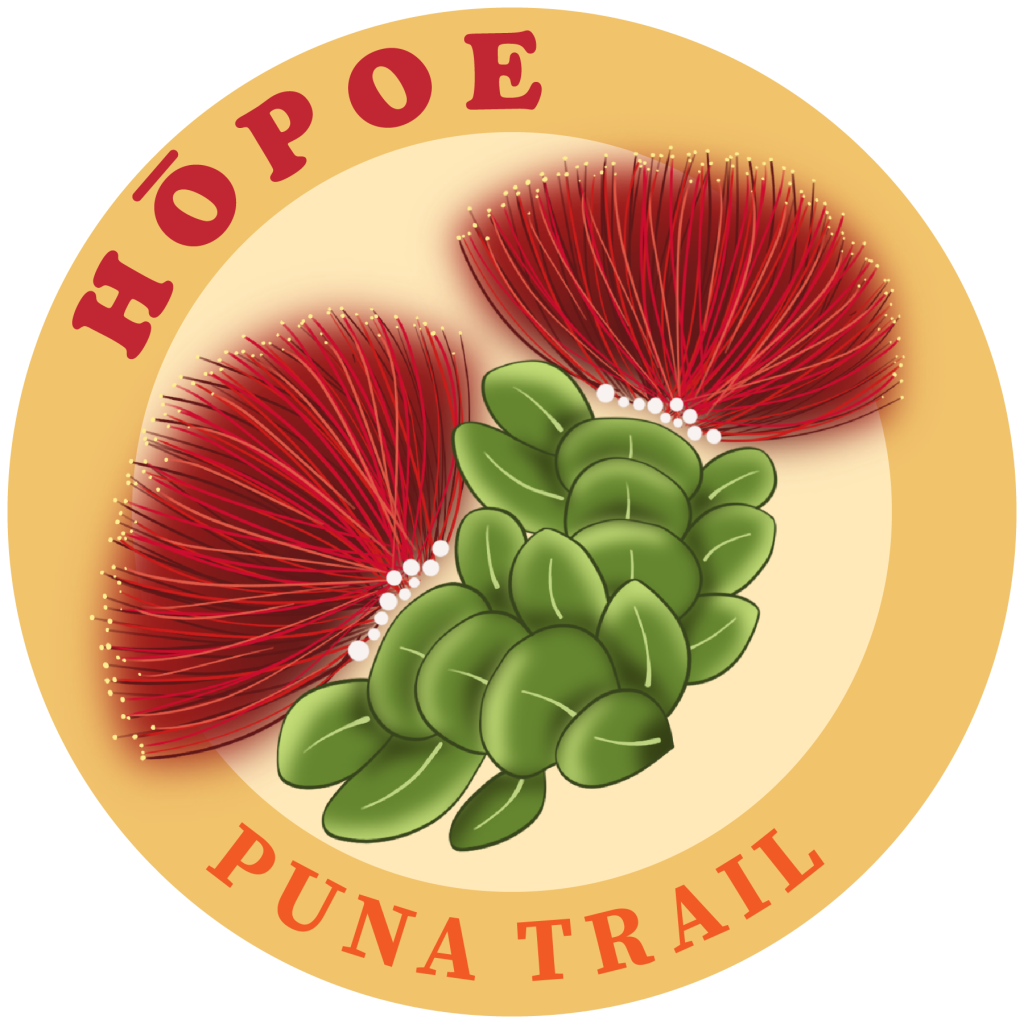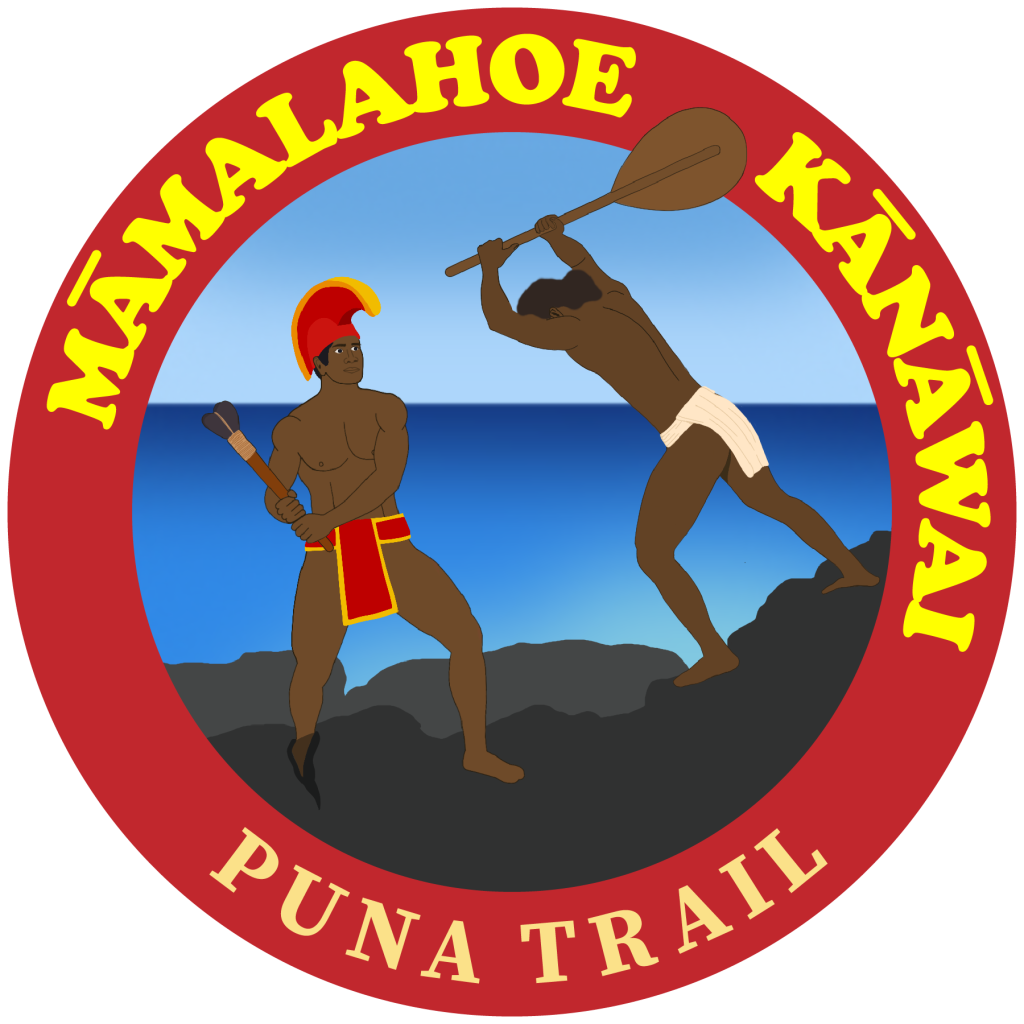Puna Trail Planning Project
Welcome to the Puna Planning Project page! Here, you’ll find all the public documents relating to the ongoing planning project.
The Puna Historic Trail is a small part of the traditional ala loa, or trail system, that ran parallel to the coast around most of the island. It connected communities together and allowed for trading and gathering from different ahupua‘a. Today’s Puna Historic Trail stretches almost three miles long, through a number of former fishing village settlements. It ends at Hā‘ena Beach, a sacred site where Pele’s younger sister, Hi‘iaka, first learned hula. However, some people have mistreated the trail and the beach, showing little respect for their cultural significance. The planning team, consisting of Nā Ala Hele Trail & Access Program and Townscape, Inc., a planning company, is asking for the community’s help to come up with immediate actions and long-term solutions to protect and preserve the historic trail and cultural sites of this wahi pana.
Click the links below to review related websites and documents:
- Puna Historic Trail Planning Fact Sheet
- Puna Trail Historic Context Study
- Nā Ala Hele Trail and Access Program Puna Trail webpage
Draft Puna Historic Trail Stakeholder Action Plan
The Puna Historic Trail Stakeholder Action Plan is ready for public review and comment. Comments on the Draft Plan will be accepted until July 12, 2024.
- View the Draft Plan: PDF Download
- Submit comments on the Draft Plan: Google Form
Questions? Contact Rachel Kapule at [email protected] or 808-550-3895
Cultural and Historic Significance of the Puna Trail:
Expand the tabs below to learn more about the rich cultural history of the Puna Trail.

The Puna Historic Trail was part of the traditional coastal trail system that ran parallel to the ocean around most of the island. It served an important role in linking all of the ahupua‘a together. This trail allowed Hawaiians to move freely upon the land from one place to another; it promoted the gathering and trading of resources between different communities. Traditional foot trails were generally narrow and often twisted and turned with the natural contours of the earth. In certain areas, waterworn stones, or ʻalā, were carried in and placed on the trail as a form of paving. Evidence of this stone paving exists along the Puna Trail. This type of work required a large number of people to hali-hali rocks from the shore. Most likely at one point in time, the area ali‘i (chief) or konohiki (land manager) facilitated such an event.
 Pele and her younger sister, Hiʻiaka, resided in Puna, on the island of Hawaiʻi. While Pele rarely left her crater, Hiʻiaka often spent her days at the shores of Hāʻena, with her closest friend Hōpoe. Hōpoe taught Hiʻiaka the language of the trees, rocks, and ocean around her. She taught her how to tell the stories of the surrounding environment through the movements of their hands and bodies. Hōpoe and Hiʻiaka loved to dance hula together. Together they are credited with teaching hula pele to the Hawaiian people, a specific type of hula that originated at the shores of Hāʻena in Puna.
Pele and her younger sister, Hiʻiaka, resided in Puna, on the island of Hawaiʻi. While Pele rarely left her crater, Hiʻiaka often spent her days at the shores of Hāʻena, with her closest friend Hōpoe. Hōpoe taught Hiʻiaka the language of the trees, rocks, and ocean around her. She taught her how to tell the stories of the surrounding environment through the movements of their hands and bodies. Hōpoe and Hiʻiaka loved to dance hula together. Together they are credited with teaching hula pele to the Hawaiian people, a specific type of hula that originated at the shores of Hāʻena in Puna.
During Kamehameha’s rise to power, two of his enemies, Keawemaʻuhili of Hilo and Keōua of Kaʻū, had joined forces in Hilo. Kamehameha, spying on events around Hilo, secretly paddled from Laupāhoehoe with his companion Kahakuʻi to Kea‘au. When Kamehameha arrived in Kea‘au, at Pāpa‘i, he spotted a group of men and women fishing near the shore; one man was carrying a child on his shoulders. Kamehameha leaped from his canoe to attack them. The group fled, except for two men who stayed to fight, including the man bearing the child. As Kamehameha was running towards them, his foot slipped into a crevice in the rocks, and he found himself stuck. The fishermen ran up to him and struck his head with a paddle. This fight was named Kaleleiki, describing the way in which Kamehameha rushed out of his canoe to attack. Kamehameha knew that the reasons he survived that day were because one of the men was burdened with the child, and because the men attacking did not know that it was Kamehameha they were fighting with. It was because of this event that the Māmalahoe Kānāwai was enacted by Kamehameha. This law states: “e hele ka ‘elemakule a me ka luahine a me ke keiki a moe i ke alanui;” let old men and women and children sleep safety along the trails.

The nēnē, or Hawaiian goose, is the largest native land bird in Hawaiʻi. It’s characterized by its dark brown and white plumage, its long white neck, and black head. Nēnē evolved with no natural predators, which made them especially vulnerable to any sort of threat. By the early 1900s, nēnē were faced with extinction from loss of habitat and predation from introduced rats, dogs, and mongoose. In 1918, Herbert C. Shipman, a rancher from Puna, desired to save the near-extinct population of geese. He started the world’s very first nēnē breeding program at his property in Keaʻau. Years later in 1950, the State of Hawaiʻi (the Territory of Hawaiʻi at the time) initiated a breeding project at Pōhakuloa. Shipman supplied the State with birds from his captive population in Keaʻau. However, the State was unsuccessful in its first round of breeding. They reached out to the Wildfowl Trust, an English conservation organization, in an effort to increase their success rate. In response, the Trust sent their curator, John Yealland to Hawaiʻi. Yealland offered guidance to the State on implementing the Trust’s standard rearing protocol. Before returning back home, Shipman gave Yealland a pair of nēnē to breed back to England. But to their surprise (and amusement), upon arriving both nēnē had laid eggs! The Wildfowl Trust reached back out to Shipman to send a third bird, a male, which he did. The coordinated efforts of Shipman, the State, and the Wildfowl Trust demonstrated remarkable success. It was Herbert Shipman’s foresight in recognizing the imperative need for nēnē breeding program that ensured the continued existence of these birds today. Shipman’s contributions played a pivotal role in preserving a species that might otherwise have faced extinction.

